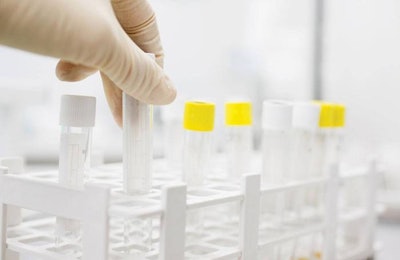
This article appears in the May/June issue of Pig International. View all of the articles in the digital edition of this magazine.
Animal proteins, such as those derived from milk, blood and eggs, are esteemed highly for their nutritive value. Indeed, protein digestibility in these ingredients exceeds 90 percent, whereas digestibility in soybean meal is about 85 percent. In addition, these ingredients are prized for their palatability, assuming their quality is superior and free of manufacturing defects. Accordingly, their price is much higher than prices for most vegetable protein sources, to such point that their inclusion is often limited or even omitted in low-cost piglet feeds.
New evidence and current market thinking have provided further insights into the employment of such animal-derived ingredients, especially towards the direction of bioactive compounds. Such molecules have beneficial effects on animal health, mostly by enhancing the immune system, but also directly on pathogens. In fact, some of these bioactive molecules are already available in purified forms, albeit at a price that makes their use prohibitive for animal feeds. Thus, it is by recognizing the contributions of these compounds and by taking them into the overall gut health protection plan that we can take advantage of their presence and possibly reduce overall feed cost through elimination of other external additive supplements.
Milk
Normal milk (not only colostrum) contains a number of peptides, hormones and enzymes with a biological role capable of promoting maturation of the digestive system, modulating gut microflora, and inducing secretion of hormones and peptides in the gut. Such compounds include lactoferrin, lysozyme, protease inhibitors, lactoperoxidase, neurotensin, bombesin, thyroid hormones, prolactin and insulin. In addition, several growth-stimulating substances such as insulin, epidermal growth factor and insulin-like growth factors have been identified in milk.
The presence of insulin-like growth factors (IGF-I and IGF-II) in milk have received considerable attention because these compounds have been shown to increase villus height and enhance maturation of the gastrointestinal tract. It is also believed that absorption of these factors might enhance development of body organs and promote muscle growth. Today, there is considerable interest in the commercial aspects of using such compounds in milk replacers and other nutritional supplements for neonatal and weaned pigs.
Blood
Animal plasma is the most valued ingredient derived from blood. Not only is it exceptionally rich in protein of high nutritive value, but it also contains a great number of bioactive compounds, as would be expected for blood. Of primary importance is the immunoglobulin fraction, and especially IgG, which has been shown to result in improved animal health and performance. As such, animal plasma is used invariably in most high-quality piglet diets.
Some of these bioactive molecules are already available in purified forms, albeit at a price that makes their use prohibitive for animal feeds.
Recent studies with piglets and broilers have demonstrated that challenges under trial conditions or natural infection with pathogenic bacteria and viruses result in reduced mortality and improved health when diets contained animal plasma. New data have provided evidence that the systemic effects of plasma favor a mitigation of immune system overreaction, allowing for a better health status that leads to improved feed intake and energy utilization by the animal. In fact, it has been possible to demonstrate an antibiotic "sparing" effect that cannot be fully explained by the high concentration of immunoglobulins. In addition to immunoglobulins, it is to be expected that similar bioactive compounds exist in blood as in milk, exerting comparable beneficial effects on young animals.
Eggs
The egg is the vehicle through which the hen passes all nutrients and bioactive compounds to the embryo and newly hatched chick. In essence, it is a complete package that we can think as the summation of the two products above, albeit in micrographic form. Modern technology has enabled the creation of designer eggs, in that the immunoglobulins they contain are geared towards specific piglet diseases — acting very much like animal plasma immunoglobulins.
Like milk and blood, the egg is a treasure trove of bioactive ingredients. In addition to the compounds mentioned in the section for milk, it merits focusing on lysozyme. This antibiotic molecule is known to exert a powerful effect against bacteria and viruses. In fact, it is currently available in purified (albeit, too expensive) form, and there are numerous studies demonstrating its efficacy, especially under less than ideal hygienic conditions. It suffices to mention that egg whites are one of the primary sources of lysozyme.
We need all possible help
A low-cost diet will contain very little or none at all of any of these specialty products. As such, it is not important to consider the contribution of bioactive compounds in such diets. On the other hand, antibiotic-free diets that need to be of a higher and more complex quality can afford the use of specialty ingredients such as milk proteins, animal plasma and egg antibodies. In this case, it is perhaps possible to start thinking how to account for the presence of bioactive compounds. Can they be trusted upon to reduce the inclusion level of other supplements? Or perhaps, can they be relied upon to bring into the formulation more vegetable proteins, reduce lactose or increase density to boost intake and growth performance (as opposed to limit-feeding often employed to avoid early digestive complications)? It is indeed a new territory that merits our attention.
Read more about bioactive compounds

















